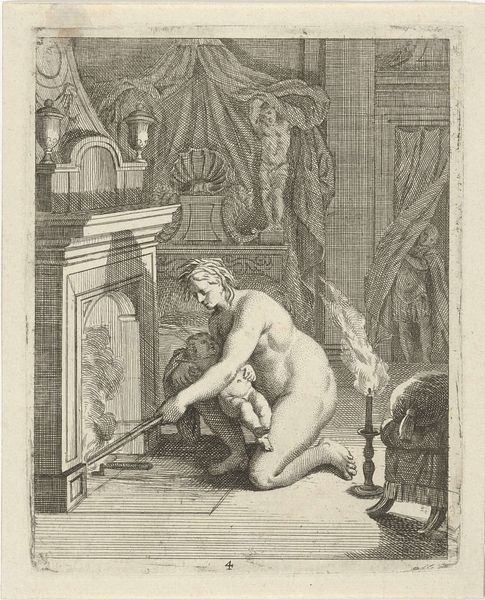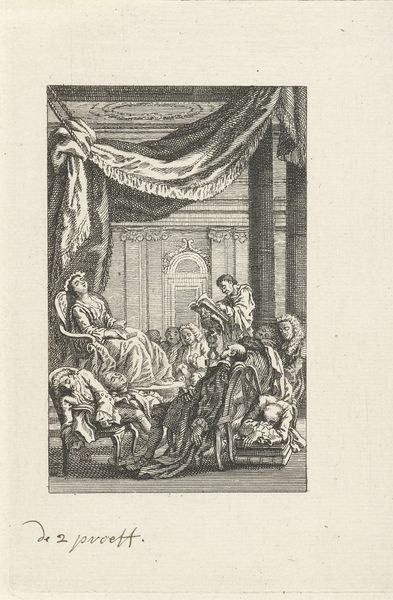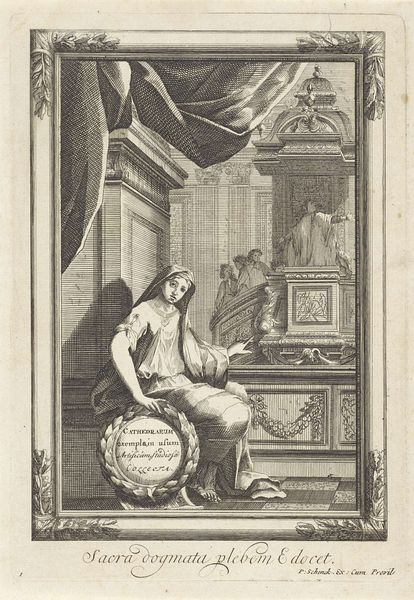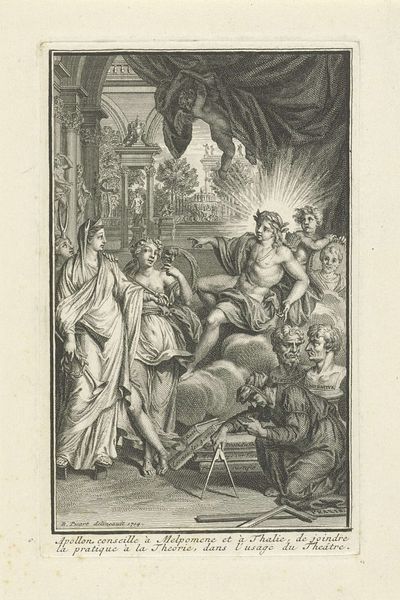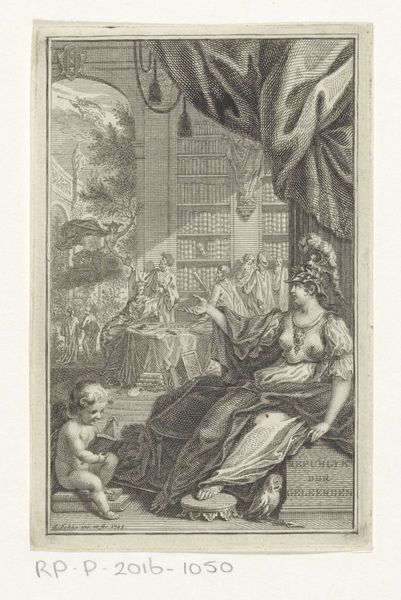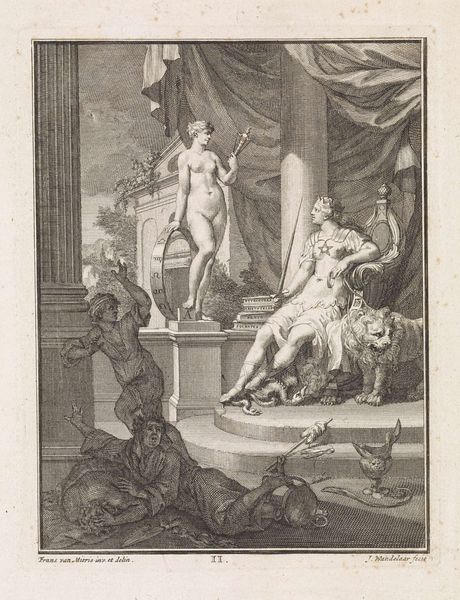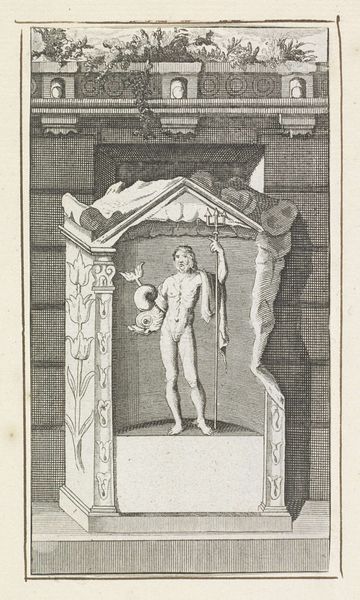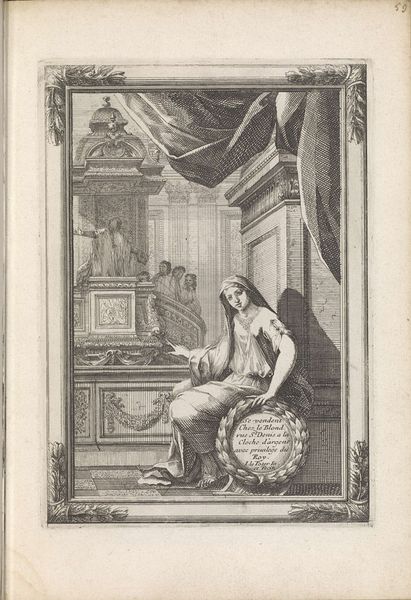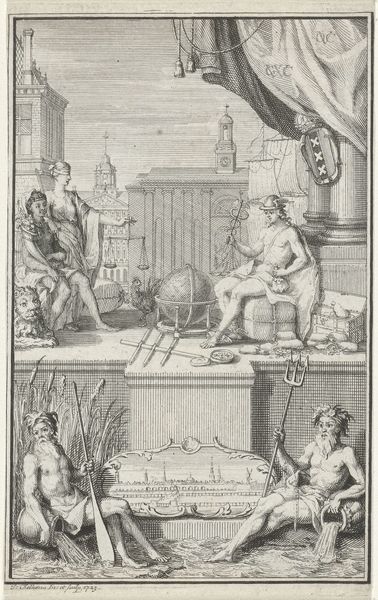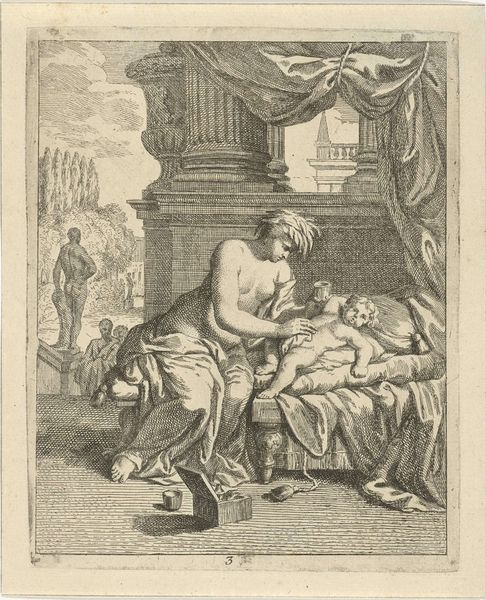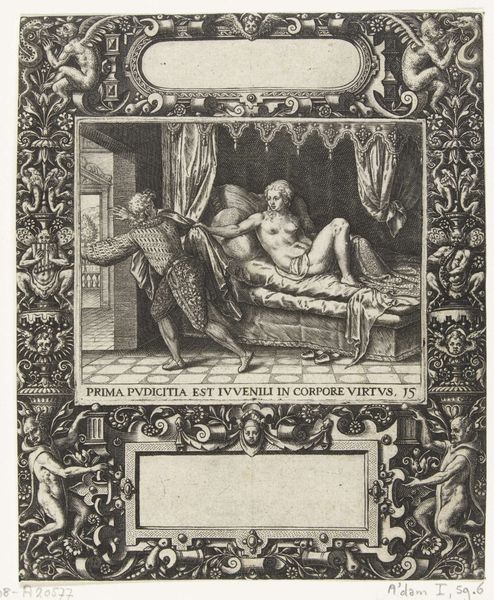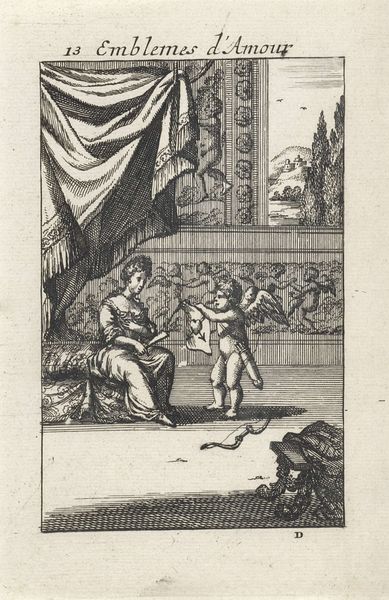
print, engraving
#
allegory
#
baroque
# print
#
figuration
#
intimism
#
line
#
history-painting
#
nude
#
engraving
Dimensions: height 145 mm, width 95 mm
Copyright: Rijks Museum: Open Domain
Curator: This engraving, titled "Vrouw stapt bij Amor in bed," which translates to "Woman steps into bed with Cupid," was created in 1686 by Jan van Vianen. It’s currently held at the Rijksmuseum. Editor: It immediately strikes me as theatrical, almost like a scene from a baroque opera set in a wealthy household. There's a tension between the opulence of the setting and the exposed figures, creating a rather charged atmosphere. Curator: Absolutely. Van Vianen masterfully employs the engraving technique. Look at the density of lines used to depict the elaborate bed hangings, contrasted with the smoother rendering of the skin. This attention to textural detail showcases his expertise and speaks volumes about the skilled labor that went into its making. It makes me think about the cost of engravings, the printing, who might have been commissioning this work, and who was consuming it. Editor: The composition, though, relies heavily on established iconography. Cupid, the god of love, is readily identifiable, and the inclusion of the Venus statue implies notions of beauty, sensuality, fertility. But the woman herself, seemingly caught in the act, is perhaps an allegory for earthly love or perhaps temptation. Her gesture implies reluctance, doesn't it? Curator: I can see how you're reading a moment of reluctance, or invitation into the dynamics, a pause for discussion. I'm curious about what kind of inks Van Vianen would be using in Amsterdam during that period, perhaps the availability or specific qualities would explain the fineness of the work and what sorts of patronage allowed such artistry. Also who would have originally used such detailed illustrative prints such as this one and how would they value the materials that are deployed for their use. Editor: Interesting points. Also the way that Love has been represented in a very different manner across eras. There’s also an ambiguity here, this image being both alluring and unsettling – something that continues to fascinate me about art historical depictions of such charged themes. Curator: Ultimately, examining Van Vianen's artistic production within its original socio-economic framework, combined with interpreting the image, enhances our engagement with both historical materialism and semiotic representations. Editor: Agreed, considering both the imagery and its making can indeed grant us a much fuller appreciation of such fascinating artwork!
Comments
No comments
Be the first to comment and join the conversation on the ultimate creative platform.
